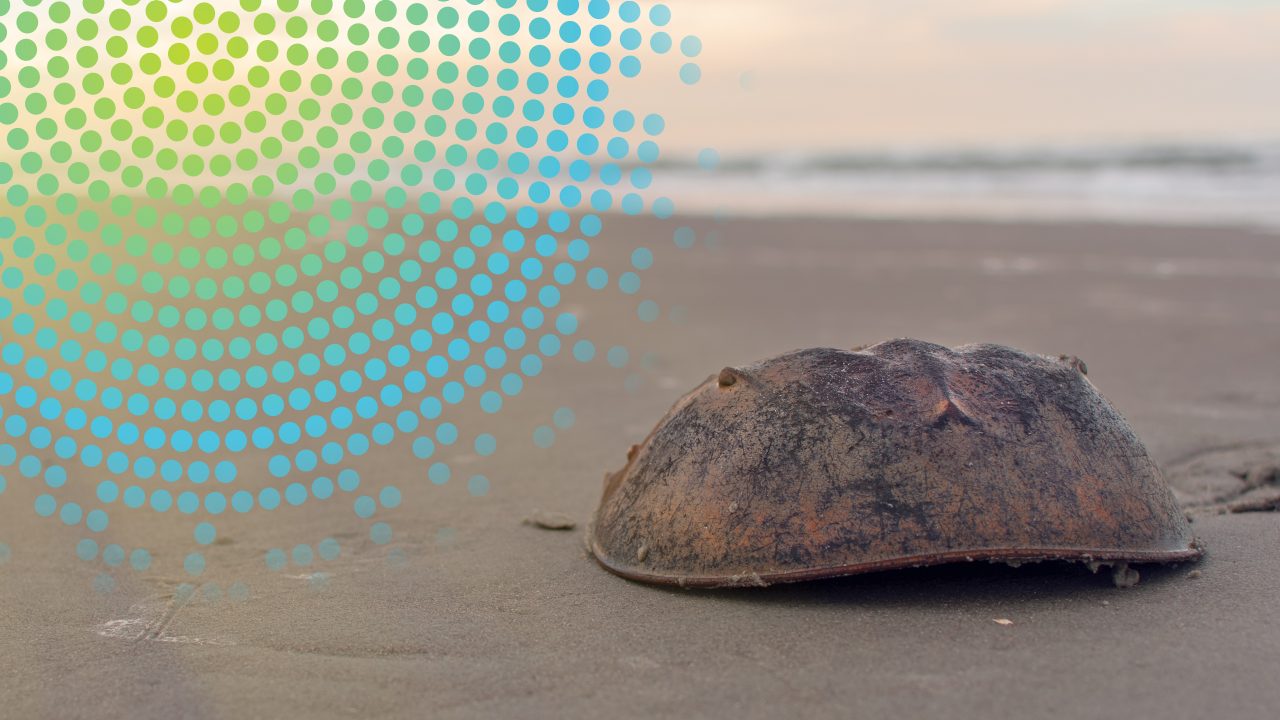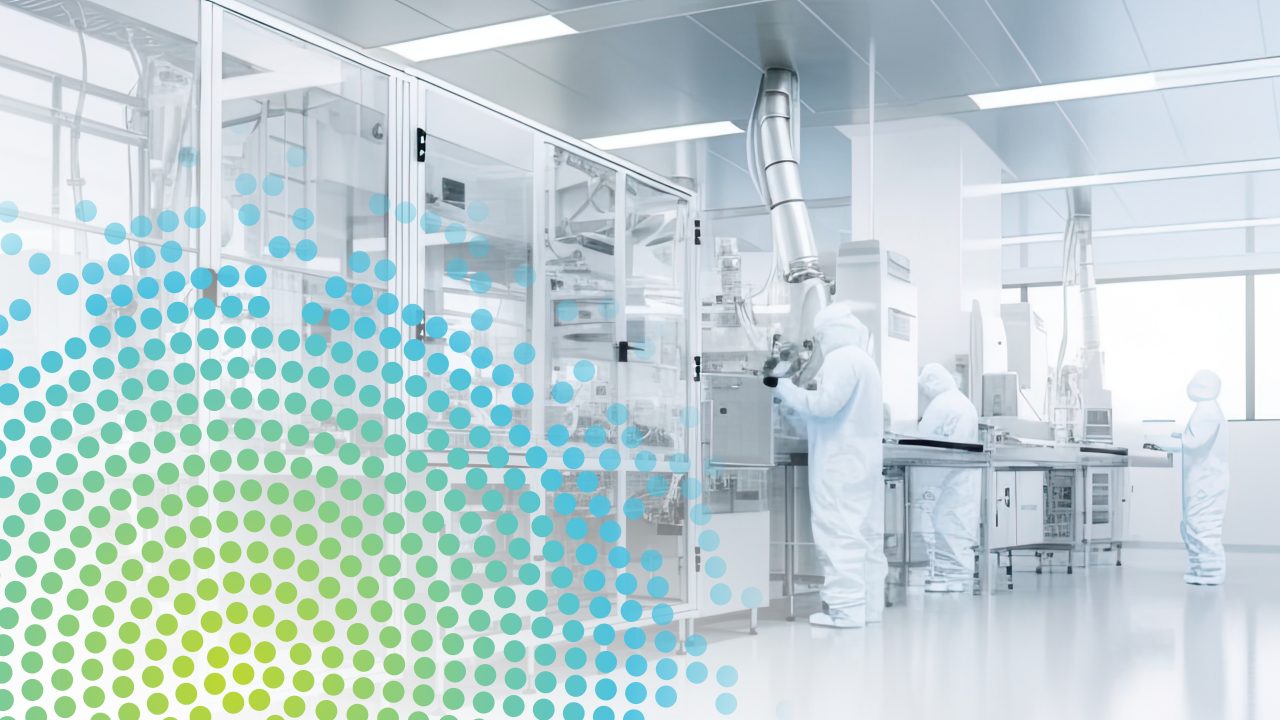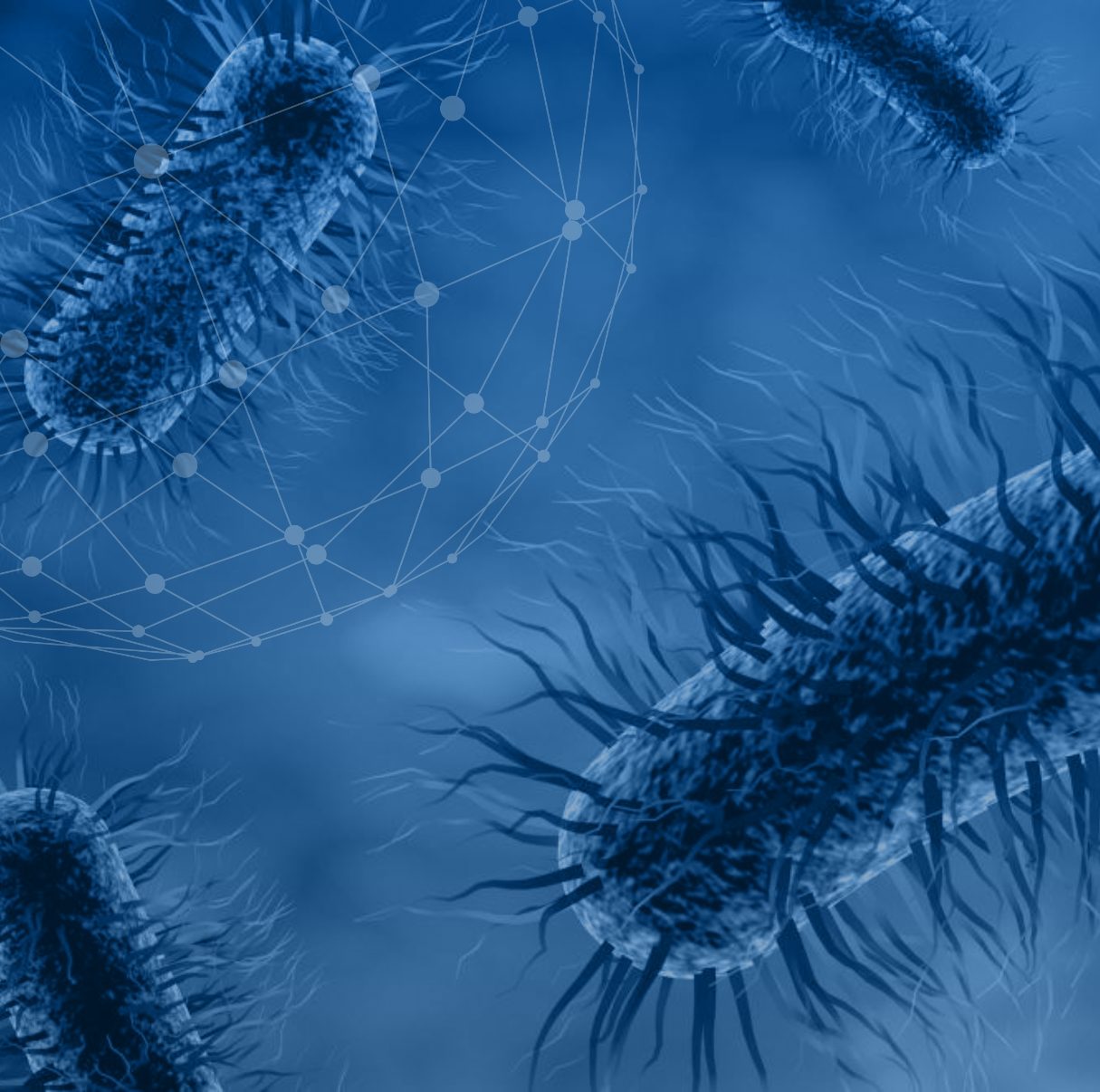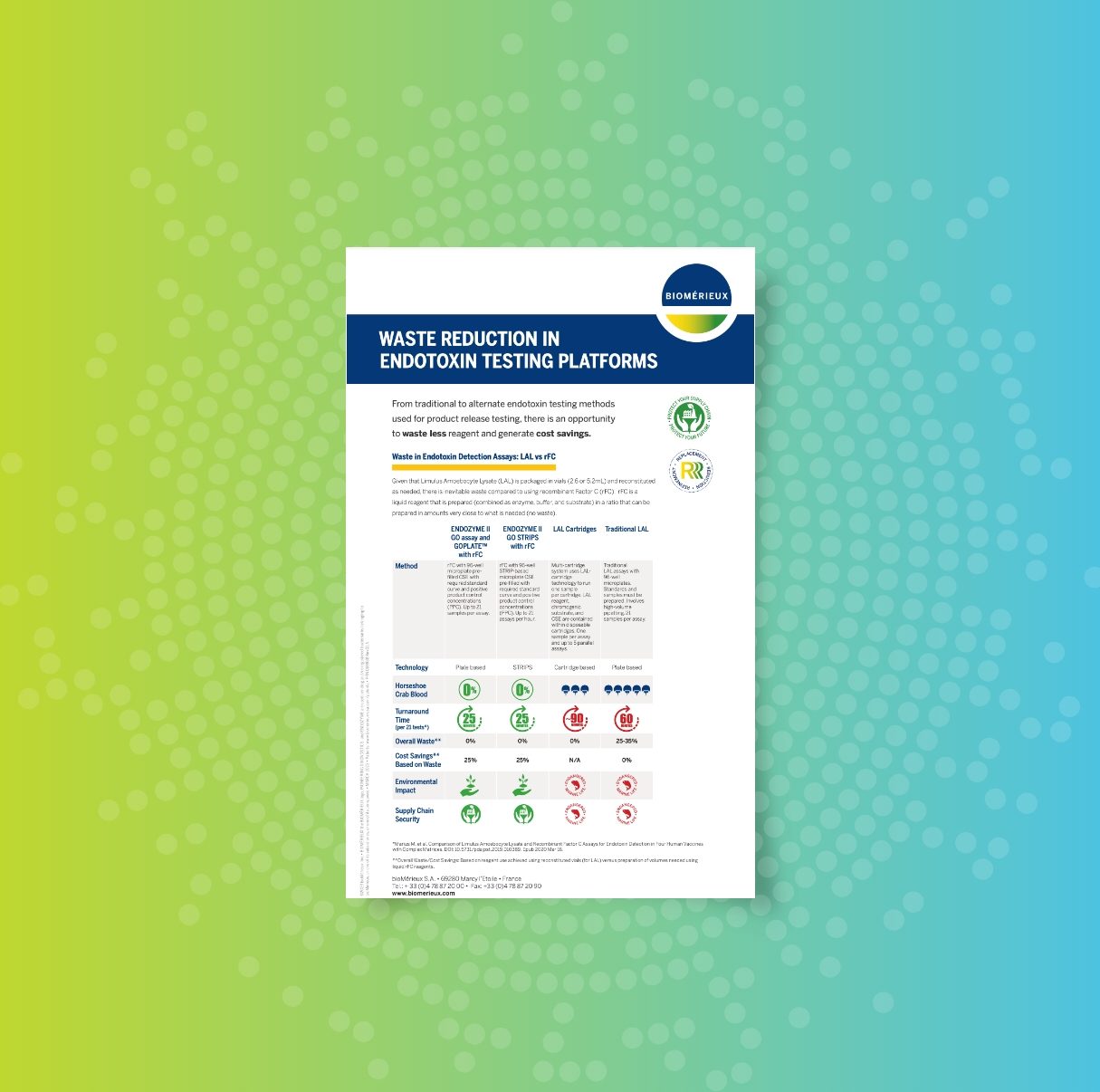Champion Sustainability: The 3R Revolution in Endotoxin Testing
⏱Read time: 2 minutes, 40 seconds
The 3Rs principle has resonated with the pharmaceutical industry as an ethical warrant of animal welfare since 1959.1 It is increasingly associated with the so-called 3Rs initiatives related to larger sustainability initiatives such as reducing waste and reusing and recycling resources and products. Those new 3Rs were agreed upon at the G8 Sea Island Summit in June 2004 as a new G8 initiative.2 The use of rFC meets several criteria of the 3Rs, including conservation, supply chain assurance, waste reduction, and animal welfare as well as a platform for test modernization.
Along these lines, recombinant protein production, which has recently proliferated in the development of treatments for a wide variety of clinical indications, could be classified as a fourth “R”.3,4
rFC is a modern biologic reagent among the most modern life-saving drug products. It is produced in a living single-celled organism, in which a cloned gene of the horseshoe crab sequence for Factor C has been inserted. These cells with recombinant inserts grown in a large cell culture (media) reactor and produce the desired protein which is subsequently purified for commercial use.

Biologics have provided solutions to the 3R paradigm since the inception of recombinant human insulin (Lilly’s Humulin®) in 1982. Because the insulin gene could be cloned and inserted into microorganisms and produced in cell culture reactors, there was no need to further harvest extensive tissue from cows and pigs (bovine and porcine insulins were animal insulins prior to r-insulin).
 Figure 1. Recombinant human insulin: Even cats and dogs use recombinant insulin these days rather than animal insulins harvested from cows and pigs.
Figure 1. Recombinant human insulin: Even cats and dogs use recombinant insulin these days rather than animal insulins harvested from cows and pigs.
Biologics as a model are not entirely new, but what is a recent development is their recombinant production.
Historically old biologics existed (rabies vaccine, horse sera, etc.), but today “biologic” mostly refers to the following:
- Large, complex molecules that must be produced in living organisms
- Produced via recombinant methods
- Often based upon immune modulation
- Sometimes bring adverse immunological reactions
- “The process is the product” in terms of a QC vantage
- Consist of different classes that include monoclonal antibodies, coagulation factors, cytokines, vaccines, fusion/chimeric proteins, and cell therapy products
In terms of “refinement,” the biologics revolution has allowed for the recombination of molecules, including insulin, which now allows diabetics to utilize insulin varieties that do not occur in nature (e.g., “fast-acting”, “slow-acting” and “ultra-long acting” etc.).
Utilizing recombinant technology for rFC manufacture means that no horseshoe crabs (HSC) are needed, and the entire process is more ecologically friendly and infinitely sustainable. HSCs are listed as “vulnerable” in the US (a pre-endangered status) and “endangered” in Asia (as defined by the IUCN(5)). Many shore birds, like the Red Knot,5 who depend on HSC eggs for food on their migratory journeys, are now endangered from the loss of egg mass on the shores, particularly in Delaware Bay.
Sanctuaries have been created thanks to the importance of the species for medical purposes, but their vulnerability on the extinction scale exposes them more to other environmental impacts. It seems underappreciated that recombinant Factor C (rFC) is a non-animal-derived reagent produced in a biotechnology manufacturing facility used to detect bacterial endotoxins in pharmaceutical products. Since it is not harvested from wild animals as is LAL, . the rFC assay helps alleviate pressures on its ecosystem derived from a growing demand for LAL. Additionally, because it is produced in an industrial lab, it is an inherently more reliable resource, ensuring greater supply chain security.
Global drug manufacturers are increasingly seeking to employ rFC to avoid the potential pitfalls of LAL’s (a) isolated geographical location of production, (b) the inherent variability of its batches that are naturally sourced, and (c) the risk of increasing costs given a global climate influx. They are prompting governmental authorities to revise outdated guidelines and add rFC in the texts.6
Discover Additional rFC Endotoxin Resources
References:
(1). The Principles of Humane Experimental Technique by W.M.S. Russell and R.L. Burch (jhsph.edu)
(3). Gohil et al., Engineering Strategies in Microorganisms for the Enhanced Production of Squalene: Advances, Challenges and Opportunities, Front. Bioeng. Biotechnol., 22 March 2019, Sec. Synthetic Biology, Volume 7 – 2019.
(4). https://cen.acs.org/pharmaceuticals/vaccines/hunt-alternatives-shark-squalene-vaccines/98/i47
(5). International Union for Conservation of Nature’s Red List of Threatened Species American Horseshoe Crab Limulus polyphemus status, Tri-spine Horseshoe Crab Tachypleus tridentatus and Red Knot Calidris canatus
(6). European Pharmacopoeia (Ph. Eur.) Supplement 10.3, the new general chapter 2.6.32. Test for bacterial endotoxins using recombinant factor C



